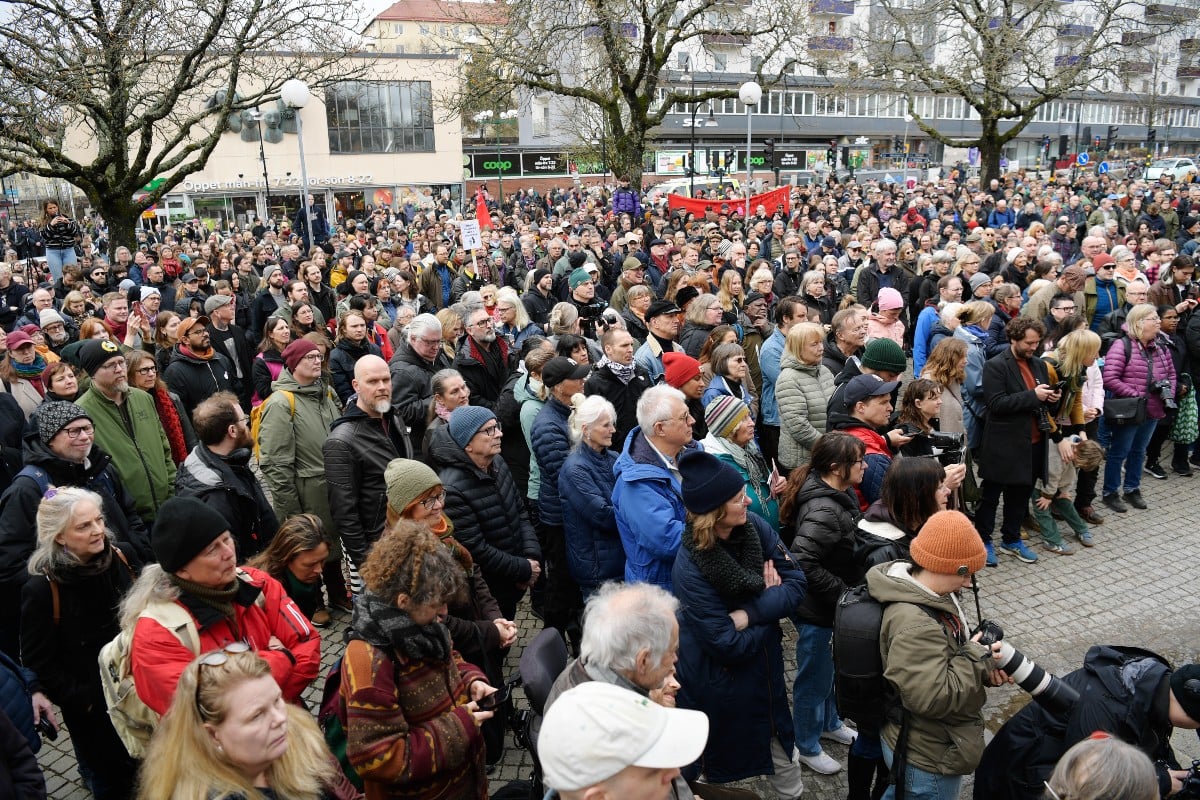More crimes are committed against immigrants in Sweden as a group, the annual national survey of safety compiled by the Swedish National Council for Crime Prevention (Brottsförebyggande rådet – Brå) has found.
The survey (Nationella trygghetsundersökning – NTU), also found immigrants have less confidence in the Swedish judicial system and feel less safe than the general population.
While residents in Sweden overall report feeling safer compared to last year’s survey, differences between the perceptions of immigrants and residents with Swedish backgrounds remain.
Among immigrants, 24 percent reported feeling unsafe, while the corresponding figure for people with Swedish backgrounds was only 13 percent, the survey, the results of which were released on Thursday, found.
“People who are born in another country often feel more unsafe. Previous research by the national survey of safety shows that the differences remain, even if one controls for other important factors like gender, age, income, where people live, and if someone has been the victim of a crime,” said Åsa Irlander, an investigator with the crime prevention council, said in a statement.
Despite the remaining gap between immigrants and Swedes when it comes to feeling safe, fewer immigrants feel unsafe day than the 33 percent who reported feeling unsafe back in 2005.
The study also shows, however, that 16 percent of people born in other countries reported being the victims of crime compared to only 11 percent of the general population in Sweden.
Immigrants also reported having less faith in the Swedish legal system compared to the general population, with only 53 percent of immigrants saying they had high confidence in Sweden’s judiciary, compared to 61 percent for the entire population.
Nevertheless, crime prevention council investigator Anna Frenzel believes things are heading in the right direction.
“The number of people who feel safe when they head out at night has increased somewhat, as have the number of people with confidence in the police and the judiciary,” she said in a statement.
The report also found regional differences in how safe people in Sweden feel. Residents in Skåne in southern Sweden are the least safe, with 19 percent reporting they feel unsafe.
At the other end of the scale is Jämtland in northwestern Sweden, where only 8 percent of residents reported feeling unsafe.
Frenzel added she is surprised at the difference between the reality of the crime situation in Sweden and how it is presented in the media.
“There aren’t as many victims of crime as the media makes it seem. The media gives the impression that crime is increasing, but our study shows that the number of crime victims has remained relatively stable,” Frenzel told the TT news agency.
In the heavily immigrant Stockholm suburbs of Alby, Fittja, and Hallunda, police are engaged in ongoing efforts to reduce crime and increase residents’ sense of safety.
“We’re trying to make people feel more safe here but it’s hard to get those who are foreign-born to engage in our work, like neighbourhood watch programmes, for example,” police inspector Mats Backström from Botkyrka, another heavily immigrant Stockholm suburb, told TT.
“They would rather take care of themselves. They’ve built up their own closed society with close ties to relatives and friends.”
Backström theorized that, by keeping to themselves, immigrants make themselves more vulnerable, which could explain why they feel unsafe.
He added, however, that he senses residents do feel more secure now than previously, even if crime levels haven’t changed much.
The crime prevention council survey is based on responses from 14,000 interviews.



 Please whitelist us to continue reading.
Please whitelist us to continue reading.
Member comments